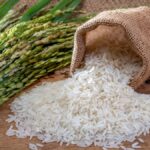In the heart of the Arabian Peninsula, where golden deserts meet the sparkling coastline, rice holds a place of honor on every dining table. In the UAE, rice is not just food — it’s a bridge between cultures, a symbol of generosity, and an essential part of daily life. From the grand Emirati feasts of biryani and machboos to the simple comfort of plain steamed rice served with curry, this humble grain weaves together the country’s diverse culinary traditions and global influences.
The United Arab Emirates, with its rich multicultural population, has embraced rice in a way that reflects both its heritage and modern lifestyle. Every household — whether Emirati, Indian, Filipino, or Arab — has its own special way of cooking rice, turning it into a celebration of flavors, aromas, and textures. In every supermarket and hypermarket across the UAE, you’ll find aisles dedicated to rice, with brands and varieties sourced from India, Thailand, Pakistan, and beyond. Whether it’s Basmati for its long, fragrant grains or Jasmine rice for its soft, sticky texture, there’s something for every palate and occasion.
The Cultural Significance of Rice in the UAE
In Emirati culture, rice symbolizes abundance and hospitality. No traditional gathering or festive occasion is complete without a rice-based dish at the center of the table. Dishes like Machboos and Biryani are more than just meals — they represent warmth, sharing, and togetherness. The preparation of these dishes often begins hours in advance, as families gather to wash, soak, and steam the rice to perfection before layering it with spiced meats or seafood.
During Ramadan, rice dishes play a central role in Iftar, the meal that breaks the fast. From fragrant chicken biryani to saffron-infused lamb machboos, these meals not only replenish energy but also connect generations through shared traditions. In weddings, festivals, and national celebrations, rice remains a unifying element that transcends cultural boundaries.
The UAE’s multicultural community has also contributed to a vibrant fusion of rice-based dishes. Indian biryanis, Filipino adobo rice, Persian tahdig, and Chinese fried rice all coexist beautifully in Emirati kitchens, reflecting the nation’s inclusive and diverse identity.
Varieties of Rice Popular in the UAE
One of the most fascinating aspects of rice in the UAE is the sheer diversity of options available. Here are some of the most popular varieties found across the country:
- Basmati Rice – The king of rice in the UAE, prized for its long, slender grains and distinctive aroma. It’s the top choice for biryanis and pulaos.
- Jasmine Rice – Popular among Southeast Asian communities, it has a soft, slightly sticky texture and a subtle floral fragrance.
- Sona Masoori Rice – A medium-grain rice favored for daily meals due to its lightness and easy digestibility.
- Parboiled Rice – Common in South Indian and African cuisines, this variety retains more nutrients and offers a firm texture after cooking.
- Brown and Red Rice – Gaining popularity among health-conscious consumers, these varieties are rich in fiber and nutrients.
- Calrose Rice – Often used in sushi and modern fusion dishes across UAE restaurants.
Rice as a Symbol of Modern UAE Living
As the UAE continues to evolve as a global hub, rice has adapted to modern lifestyles while retaining its traditional roots. Today, consumers prefer convenience without compromising quality. This has led to the rise of ready-to-cook rice mixes, pre-cooked biryanis, and instant rice packs that save time yet deliver authentic flavors.
Restaurants and cloud kitchens across Dubai, Abu Dhabi, and Sharjah offer a wide range of rice-based meals — from gourmet seafood risotto to traditional lamb mandi. These dishes reflect how rice has seamlessly blended into both luxury dining and everyday meals.
Even in the wellness and fitness community, rice plays a crucial role. Brown rice, red rice, and quinoa-rice blends are increasingly popular among health-conscious residents who seek a balance of tradition and nutrition. Many consumers now pair rice with grilled meats, fresh salads, and even plant-based curries, aligning with the UAE’s growing trend toward sustainable and healthy eating.
Rice in Everyday UAE Life
Walk through any UAE neighborhood, and the aroma of freshly cooked rice wafts from every kitchen. From family lunches in Sharjah to festive feasts in Dubai and Abu Dhabi, rice brings people together. It’s served with spicy curries, grilled kebabs, seafood stews, or even as a simple plate of ghee rice paired with yogurt.
Rice also plays a role beyond the household. In restaurants, hotels, and catering businesses, rice is a key part of the culinary identity of the UAE. The diversity of rice dishes on menus mirrors the diversity of the people who call this country home.
Even during travel or outdoor adventures, residents often pack rice-based meals — biryani, fried rice, or lemon rice — as they are comforting, filling, and familiar. Whether in a five-star hotel or a home-cooked lunchbox, rice remains a constant presence that connects hearts and cultures.
Conclusion
In the UAE, rice is more than a staple — it’s a story of unity, heritage, and evolution. It carries with it the flavors of the past and the promise of the future. Every grain tells a tale of migration, trade, and tradition — from the spice routes that once connected the Gulf to Asia, to the modern supermarkets that now bring the world’s best rice varieties under one roof. As the demand for healthier lifestyles grows, rice has also become an essential part of the expanding range of organic foods available across the UAE, symbolizing the nation’s shift toward mindful and sustainable eating.

